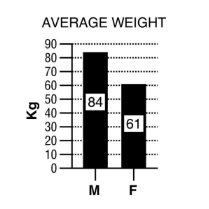Which of the following theories of aging is related to obesity?
A) free radical theory
B) telomere shortening theory
C) glycosylation theory
D) caloric restriction theory
Ans: D) caloric restriction theory
You might also like to view...
Table 1.3 shows data on various factors that may or may not be related to resting pulse rate, time to recovery to resting pulse rate after a few minutes of exercise, and reaction time measured by how quickly a student could press a keyboard key after seeing a computer-generated prompt. For each question below, write a testable hypothesis, identify the dependent and independent variables, sketch
an appropriate graph of the results, and draw a conclusion from the data presented in the table. Discuss your results.
A. Does caffeine consumption have an effect on resting pulse rate?
B. Does age play a role in resting pulse rate? Does weight?
C. Is there a relationship between eating breakfast and recovery time?
D. Is there a relationship between reaction time and height?
E. Do women who smoke show differences in their resting pulse rates compared to female nonsmokers or to
male smokers and nonsmokers?
F. Does regular exercise have an effect on resting pulse rate?


Nonruminats absorb about ________ grams of endogenous proteins a day
a. 5 to 10 b. 10 to 20 c. 10 to 30 d. 20 to 30 e. 20 to 40
Use the genetic code to determine the peptide formed by an mRNA with the sequence: AUGCCAGCCUGCUAG
A)Met, Leu, Glu, Arg B)Ser, Pro, Gly, Cys C)Met, Ser, His, Cys D)Met, Pro, Ala, Cys
When blood pressure is greater than the blood colloid osmotic pressure, there is
A. a decreased likelihood of edema. B. a net movement of fluid out of the capillary. C. a decrease in the volume of the interstitial fluid. D. less lymph formed. E. a net movement of fluid into the capillary.